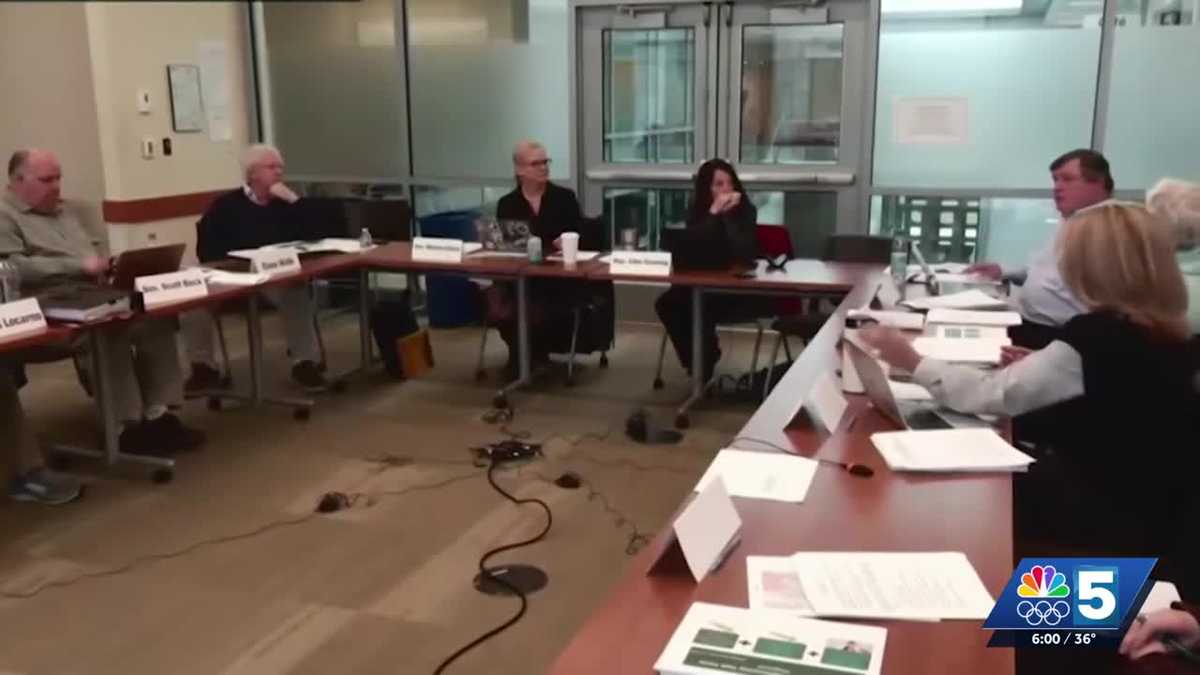Vermont Gov. Phil Scott expressed frustration Thursday after the task force tasked with submitting new school district plans voted Monday to propose a different plan. The task force was tasked with submitting three map proposals to lawmakers by Dec. 1. Now the task force is proposing a plan that would prioritize voluntary school district mergers. “It appears that those who have defaulted on their commitment are OK with ever-increasing property taxes and education costs and don’t want to see any change,” Scott said. Task force chairwoman Sen. Martine Gulick said the new plan allows for resource sharing, school construction assistance and cost reductions. “Incentivize and encourage districts to think about doing the merger work not immediately but with the support of their community,” Gulick said. This would result in districts being merged over the course of 10 years. Vermont's education reform law (Act 73) requires the new districts to take effect in 2028. “I don’t think it’s too late,” Scott said. “I mean, I was on the committee of committees, and when certain members failed in their commitment in any way … we removed them and replaced them.” In response, Gulick said, “That's unfortunate, I think it's within the law. We're putting forward a responsible plan.” Scott Beck also sits on the task force and voted against implementing the plan. Last month, he and another member proposed a map, but was met with negative feedback from members in part because of the district's disproportionate size. “We were organized to submit maps of how this would happen,” he said. “It shouldn’t just be left up to districts to do this organically.” On the property tax issue, Gulick said creating larger districts is not a solution. She said the governor needs to focus on health care reform and school infrastructure to address the problem. “Every year money comes out of our education fund, and it repairs roofs. It repairs old HVAC systems in buildings that are already dilapidated. We could take social services out of the ED fund. That's a huge expense,” she said. “There's so much that could be done – creating mega-districts. This isn't it.” While they're not completely rejecting the merger plan, the Winooski school district said neighboring districts have already signaled they're working on capacity. “The plan now before the Legislature could not be implemented for a district like Winooski,” said Superintendent Wilmer Chavarria. “If we don’t have willing partners around us who want to work together because we are an exception in Chittenden County.” The redistricting task force will hold its final meeting next Thursday in Waterbury — where they plan to prepare a report on their findings and send it to the Legislature. Previous reporting:
Vermont Gov. Phil Scott expressed frustration Thursday after the task force tasked with submitting new school district plans voted Monday to propose a different plan.
The task force was tasked with submitting three map proposals to lawmakers by Dec. 1. Now the task force is proposing a plan that would prioritize voluntary school district mergers.
“It appears that those who have defaulted on their commitment are OK with ever-increasing property taxes and education costs and don’t want to see any change,” Scott said.
Task force chairwoman Sen. Martine Gulick said the new plan allows for resource sharing, school construction assistance and cost reductions.
“[it would] Incentivizing and encouraging districts to think about doing the merger work not immediately but with the support of their community,” Gulick said.
This would result in districts being merged over the course of 10 years. Vermont's education reform law (Act 73) requires the new districts to take effect in 2028.
“I don’t think it’s too late,” Scott said. “I mean, I was on the committee of committees, and when certain members didn't live up to their commitment for any reason… we removed them and replaced them.”
In response, Gulick said, “That's unfortunate, I think it's within the law. We're putting forward a responsible plan.”
Senator Scott Beck also sits on the task force and voted against implementing the plan. Last month, he and another member introduced a map but received negative feedback from members in part because of the district's disproportionate size.
“We were organized to present maps of how this would happen,” he said. “Not just leaving it up to districts to do it organically.”
On the property tax issue, Gulick said creating larger districts is not a solution. She said the governor needs to focus on health care reform and school infrastructure to address the problem.
“Every year money comes out of our education fund and we repair roofs. We repair old heating and ventilation systems in buildings that are already dilapidated. We could deduct social services from the ED fund. That's a huge cost driver,” she said. “There's so much that could be done – creating mega-districts. That's not everything.”
While not rejecting the merger plan entirely, the Winooski School District said neighboring districts have already signaled they are at capacity.
“The plan now before the Legislature could not be implemented for a district like Winooski,” said Superintendent Wilmer Chavarria. “If we don’t have partners around us who are willing to work together because we are an exception in Chittenden County.”
The redistricting task force will meet for its final meeting next Thursday in Waterbury. There they plan to prepare a report on their findings and send it to the Legislature.
Previous reporting:
